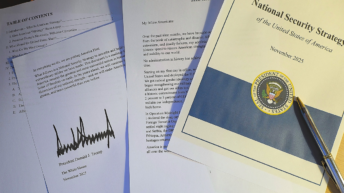
In recent years, headlines about self-driving car crashes and AI-driven medical misdiagnoses have sparked global concern over the risks posed by artificial intelligence failures. These high-profile incidents prompt a difficult but necessary question: when AI systems cause harm, who should be held responsible—the developer, the user, the company deploying it, or the AI itself?
While AI continues to transform industries and streamline decision-making, its adoption is outpacing the legal structures needed to manage its risks. Traditional liability systems—rooted in human fault and clear causality—struggle to accommodate AI’s autonomous and often opaque nature. In this legal grey zone, businesses deploying AI are left to deal with uncertain accountability while trying to protect innovation and maintain consumer trust.
This article explores the implications of AI-related harm, evaluates current legal frameworks, and analyses how evolving liability norms are shaping critical business decisions across sectors.
The Complex Web of AI Accountability
AI liability refers to the legal responsibility for damage caused by an AI system. Yet, unlike conventional technologies, AI can evolve, learn from data, and make decisions independent of human oversight. This complexity muddies traditional notions of causation and fault. If an autonomous vehicle fails to detect a pedestrian or an AI tool in healthcare misdiagnoses a disease, determining which actor is accountable—developer, deployer, or operator—is far from straightforward.
In response to these challenges, legal systems are experimenting with new models. The European Union’s AI Liability Directive proposes shifting the burden of proof to developers and operators in high-risk use cases. Some frameworks, like product liability models, extend accountability along the supply chain, while others—such as the Computational Reflective Equilibrium (CRE) model—align responsibility with levels of control and foreseeability. Still, many jurisdictions stop short of recognising AI as a legal person, placing the liability squarely on human actors.
Healthcare and transportation have seen some of the most illustrative cases. The 2018 fatal Uber self-driving car crash exposed regulatory loopholes, leading to questions about whether Uber, the vehicle manufacturer, or safety drivers bore ultimate responsibility. Similarly, a misdiagnosis involving a generative AI chatbot raised concerns over whether developers or healthcare institutions should be held liable when patients are harmed due to AI advice.
Global Regulatory Trends and Their Strategic Implications
Regulatory responses vary widely across regions, influencing how companies operate and innovate with AI. In the EU, the proposed AI Act and Liability Directive aim to increase transparency and victim compensation, particularly in high-risk sectors. These policies will likely increase compliance costs and liability exposure for AI developers and enterprises. In contrast, the U.S. favours a decentralised, sector-specific approach that emphasises responsible innovation, leaving liability issues to courts and industry self-regulation.
India is beginning to shape its AI liability policy through sectoral ethics guidelines, particularly in healthcare, while ASEAN countries have adopted governance frameworks encouraging ethical AI deployment. The UK recently signed the first international treaty on AI safety, laying stress on collaborative risk management without overly restricting innovation. For multinational companies, this fragmented legal landscape presents a strategic challenge: how to build AI systems that remain compliant across jurisdictions while managing litigation and reputational risks. Global firms must design internal governance mechanisms that align with the strictest applicable laws—often those of the EU—while staying agile enough to adapt to emerging local rules.
Beyond legal compliance, differing liability regimes can shape product design and deployment strategies. For instance, in jurisdictions with strict liability laws, companies may be less inclined to launch autonomous AI tools unless equipped with comprehensive audit trails and error logging. In contrast, flexible regulatory environments may invite more experimentation but can expose companies to future risks if standards shift.
Strategic Analysis: The Business Case for Proactive AI Liability Management
As AI liability evolves, the conversation must shift from legal risk to strategic business decision-making. Liability is no longer just a compliance issue, it is a boardroom issue that influences product timelines, investment choices, insurance costs, brand equity, and ultimately, competitive advantage.
One of the most pressing challenges for executives is uncertainty. Without clear rules on who is liable for AI failures, companies risk entering markets where the legal environment may penalise innovation or offer little protection. As a result, firms are beginning to factor liability exposure into go/no-go decisions for launching AI products, particularly in healthcare, finance, and autonomous systems.
For example, deploying AI in clinical settings requires confidence not just in accuracy, but in documentation, explainability, and regulatory alignment. Businesses must weigh the reputational damage from a potential AI failure against the competitive benefit of first-mover advantage. In sectors with high litigation risks, like insurance or transportation, some companies are opting to self-regulate, embedding ethics review boards and risk officers directly into product teams. This reduces downstream liabilities while signaling to investors and regulators a proactive stance on responsible AI.
Another strategic consideration is insurance and indemnification. As AI-specific insurance products begin to emerge, firms that invest early in compliance and transparency will likely benefit from lower premiums and better risk-transfer options. Conversely, those failing to document decisions, test models for bias, or maintain auditable records may find themselves uninsurable or facing higher legal settlements.
Moreover, cross-functional accountability—linking legal, product, and engineering teams—is becoming essential. Forward-thinking companies are developing internal “AI liability playbooks” that clarify roles, monitor model performance, and track regulatory changes globally. This not only streamlines compliance but also enhances resilience in the event of litigation or regulatory scrutiny.
Ultimately, the most resilient companies will be those that treat AI liability as a design principle rather than a defensive tactic. Building transparent, traceable, and explainable AI systems from the start is not just a legal safeguard—it’s a competitive differentiator. As trust becomes a key currency in the age of automation; businesses that proactively manage AI risk will gain the confidence of customers, regulators, and investors alike.
Conclusion
The question of who is responsible when AI systems cause harm is not merely a legal or philosophical one—it is a deeply strategic issue for modern businesses. As AI becomes more autonomous and increasingly embedded in decision-making processes, liability frameworks must evolve to balance consumer protection with innovation. For companies, the takeaway is clear: managing AI liability is no longer optional. It’s a strategic imperative that requires investment in governance, cross-border compliance, internal transparency, and risk management. In this fast-changing landscape, those who act early and decisively will not only mitigate risk—they’ll shape the standards others follow.






Add comment